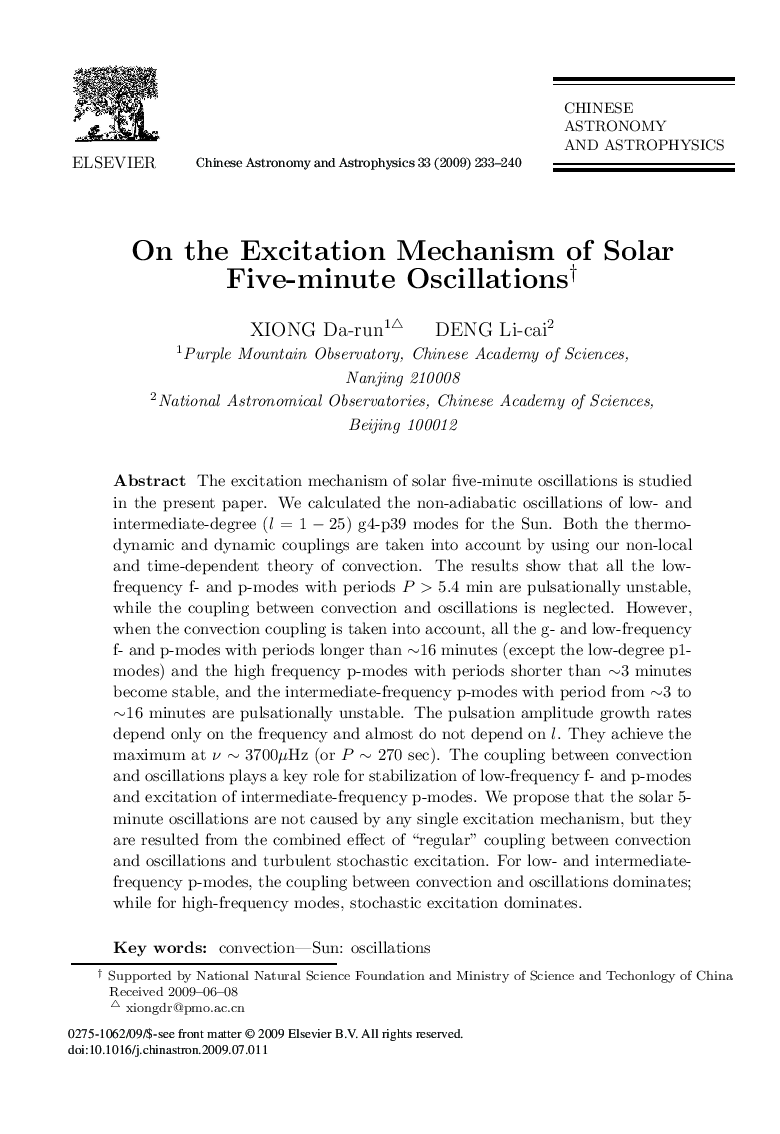| کد مقاله | کد نشریه | سال انتشار | مقاله انگلیسی | نسخه تمام متن |
|---|---|---|---|---|
| 1771971 | 1020911 | 2009 | 8 صفحه PDF | دانلود رایگان |

The excitation mechanism of solar five-minute oscillations is studied in the present paper. We calculated the non-adiabatic oscillations of low- and intermediate-degree (l = 1 − 25) g4-p39 modes for the Sun. Both the thermodynamic and dynamic couplings are taken into account by using our non-local and time-dependent theory of convection. The results show that all the lowfrequencyf- and p-modes with periods P > 5.4 min are pulsationally unstable, while the coupling between convection and oscillations is neglected. However, when the convection coupling is taken into account, all the g- and low-frequency f- and p-modes with periods longer than ∼16 minutes (except the low-degree p1-modes) and the high frequency p-modes with periods shorter than ∼3 minutes become stable, and the intermediate-frequency p-modes with period from ∼3 to ∼16 minutes are pulsationally unstable. The pulsation amplitude growth rates depend only on the frequency and almost do not depend on l. They achieve the maximum at ν ∼ 3700 μHz (or P ∼ 270 sec). The coupling between convection and oscillations plays a key role for stabilization of low-frequency f- and p-modes and excitation of intermediate-frequency p-modes. We propose that the solar 5-minute oscillations are not caused by any single excitation mechanism, but they are resulted from the combined effect of “regular” coupling between convection and oscillations and turbulent stochastic excitation. For low- and intermediatefrequency p-modes, the coupling between convection and oscillations dominates; while for high-frequency modes, stochastic excitation dominates.
Journal: Chinese Astronomy and Astrophysics - Volume 33, Issue 3, July–September 2009, Pages 233-240